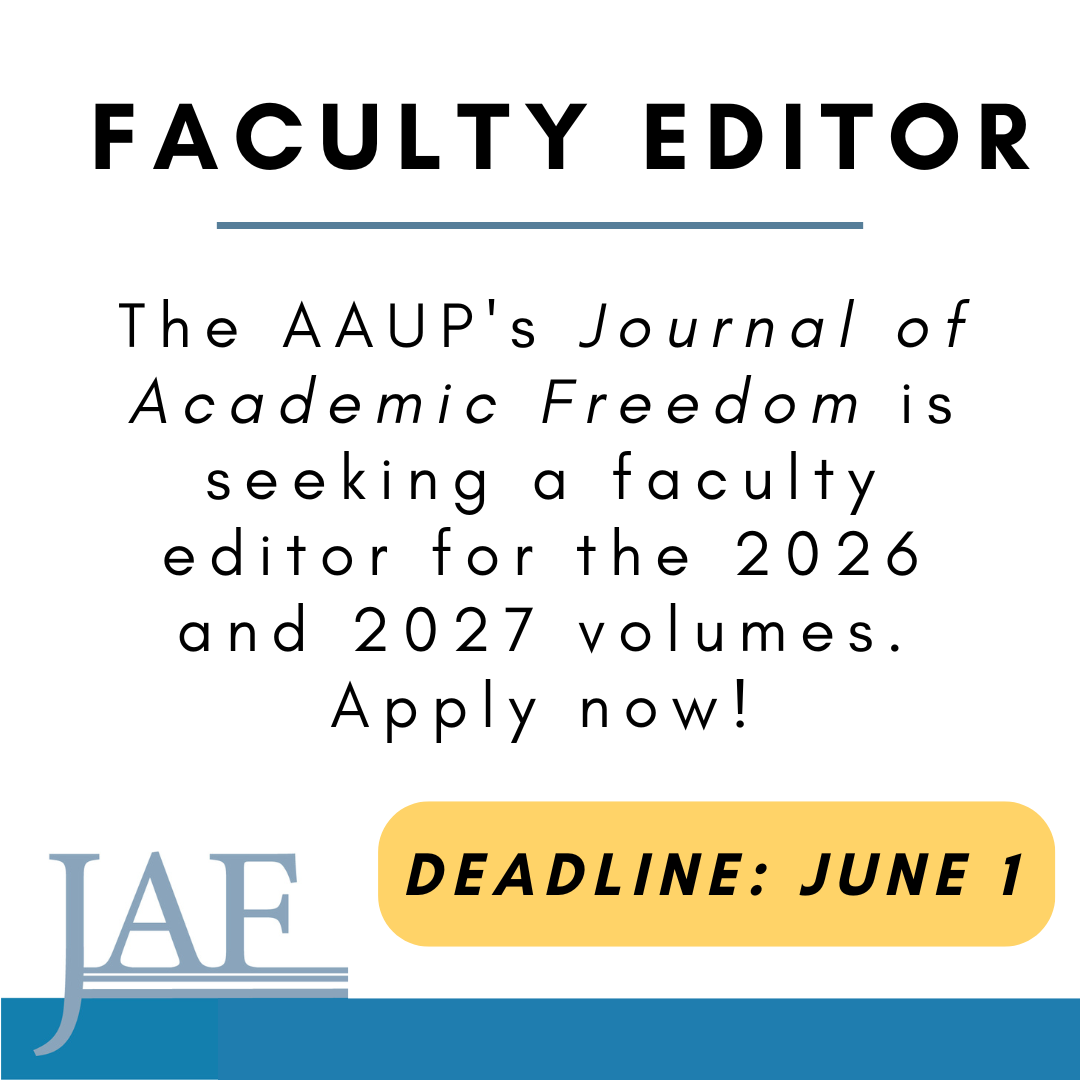- About
- Programs
- Issues
- Academic Freedom
- Political Attacks on Higher Education
- Resources on Collective Bargaining
- Shared Governance
- Campus Protests
- Faculty Compensation
- Racial Justice
- Diversity in Higher Ed
- Financial Crisis
- Privatization and OPMs
- Contingent Faculty Positions
- Tenure
- Workplace Issues
- Gender and Sexuality in Higher Ed
- Targeted Harassment
- Intellectual Property & Copyright
- Civility
- The Family and Medical Leave Act
- Pregnancy in the Academy
- Publications
- Data
- News
- Membership
- Chapters
State of the Profession: Waiting for the Higher Education Act
The US Congress has not reauthorized the Higher Education Act (HEA), the foundational federal law governing policies and programs in postsecondary education, since 2008. While a bipartisan Congress was able to reauthorize the Elementary and Secondary Education Act in December 2015, a similar “Christmas miracle” has not yet happened for higher education. Advocates have put out their wish lists for the law’s rewrite almost annually, but some wonder whether the effort is futile if the HEA, like the titular character in Samuel Beckett’s Waiting for Godot, never arrives. With Republicans now controlling the House and Democrats controlling the Senate, what can we look forward to in advancing a policy agenda for higher education as a public good?
Before answering that question, we should first recall why it has been difficult politically to make ambitious changes to higher education at the federal level. A major area of disagreement is higher education finance. There is little bipartisan consensus in Congress on the nature of the problem, much less on solutions. In general, one party states that college costs too much because the government does not adequately fund higher education; the other party argues that colleges and universities raise prices because the government provides too much unrestricted aid. The so-called Bennett Hypothesis—the assertion that increased federal spending on student aid raises tuition prices—does not hold much empirical water, but the politics of rising college costs are unavoidable.
To be clear, the problems facing higher education finance are not just a result of disagreements about policy. Decades of austerity funding have shifted the cost burden from the government to students. State governments have deliberately underfunded historically Black colleges and universities and other institutions that enroll high numbers of students of color and low-income students, such as community colleges and public regional universities. Bad-faith attacks on the teaching of race and gender and LGBTQ equity exacerbate the problems. As Tressie McMillan Cottom wrote in a New York Times op-ed earlier this year, debates about free college and student debt forgiveness boil down to a simple question: who do we believe should bear the burden of cost? Shifting perceptions so that college is widely viewed as a public good provided by the government to all rather than an individual consumer good is an uphill battle.
While there has not been a sweeping federal higher education bill in almost fifteen years, Congress and the executive branch have made some major changes that have helped college students and increased funding. Whether through the budget or the appropriations process, Congress has enacted reforms to the Pell Grant and student loan programs, such as year-round Pell and full direct lending of student loans. Just last year, the Department of Education used its regulatory power to make a host of reforms, including improving access to prison education programs and streamlining the pathway to receive student loan discharges for borrowers who have a total and permanent disability. The government was also able to close the “90/10 loophole” that for-profit colleges often used to exploit veterans, whose educational benefits could previously be counted toward the 10 percent of revenue required come from nonfederal sources.
The pandemic emergency also led to a nearly three-year pause on student loan payments. President Biden’s student loan forgiveness program, which as of this writing the administration is defending in the courts, was almost unthinkable just a few short years ago. (AAUP president Irene Mulvey released a statement on the fight for student loan forgiveness in August.) As more and more states implement free college or “college promise” programs, the idea that college should be tuition-free is spreading locally even as a national policy is, for now, stalled in Congress. Whether at the federal or the state level, multiple policy levers are available to make change.
So, where is the hope for federal higher education policy as we wait for the HEA? The AAUP’s recently released policy and legislative agenda imagines a New Deal for Higher Education, where cost is not a barrier to students’ learning and faculty members have the academic freedom and economic security to provide a high-quality education to all. By referring to higher education as a public good, we mean that higher education should be publicly funded for all. The prospect of a divided Congress should not be an invitation to wait but encouragement to act.
Jenna Sablan is senior program officer for government relations at the AAUP and staff to the AAUP’s Committee on Government Relations.




